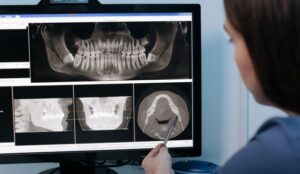Understanding Dental Implant Procedures
Dental implant procedures involve a series of steps designed to ensure successful placement and integration of the implant into the jawbone. This typically starts with a thorough examination and imaging to assess the patient's oral health and bone structure. Following this, the implant is surgically placed, allowing time for osseointegration, where the bone grows around the implant, providing a stable foundation for the replacement tooth.
Post-surgery, patients may require a healing period that can vary based on individual circumstances. Once healed, an abutment is attached, followed by the placement of a custom-made crown. This multi-step process ensures that each implant is tailored to the patient's needs, resulting in a functional and aesthetically pleasing solution for tooth loss.
Benefits of Dental Implants
Dental implants offer numerous benefits over traditional tooth replacement options, such as dentures or bridges. They provide a permanent solution that mimics the look and function of natural teeth, allowing individuals to eat, speak, and smile with confidence. Additionally, implants help preserve jawbone integrity, preventing the bone loss that often accompanies tooth loss.
Moreover, dental implants are designed for durability, with many lasting over two decades with proper care. Their ability to integrate with the jawbone means that they do not shift or cause discomfort, unlike removable dentures. This stability enhances the overall quality of life for patients, making dental implants a preferred choice for tooth replacement.
Care and Maintenance of Dental Implants
Proper care and maintenance of dental implants are crucial to ensuring their longevity and success. Patients are encouraged to maintain excellent oral hygiene by brushing and flossing regularly, just as they would with natural teeth. Additionally, routine dental check-ups are essential to monitor the health of the implants and surrounding gums.
It is also important for patients to avoid habits that could jeopardize their implants, such as smoking or grinding their teeth. By adhering to these care guidelines and consulting with their dentist regularly, patients can enjoy the benefits of their dental implants for many years.
Common Myths About Dental Implants
There are several myths surrounding dental implants that can lead to misconceptions about the procedure and its outcomes. One common myth is that dental implants are not suitable for older adults; however, age is not a limiting factor as long as the patient has healthy bone and gums. In fact, many older adults successfully receive implants and enjoy improved quality of life.
Another prevalent myth is that the implant procedure is extremely painful. While there may be some discomfort post-surgery, advances in dental technology and anesthesia have significantly minimized pain during the procedure. Understanding these myths can help potential patients make informed decisions about their dental health and the benefits of implants.


